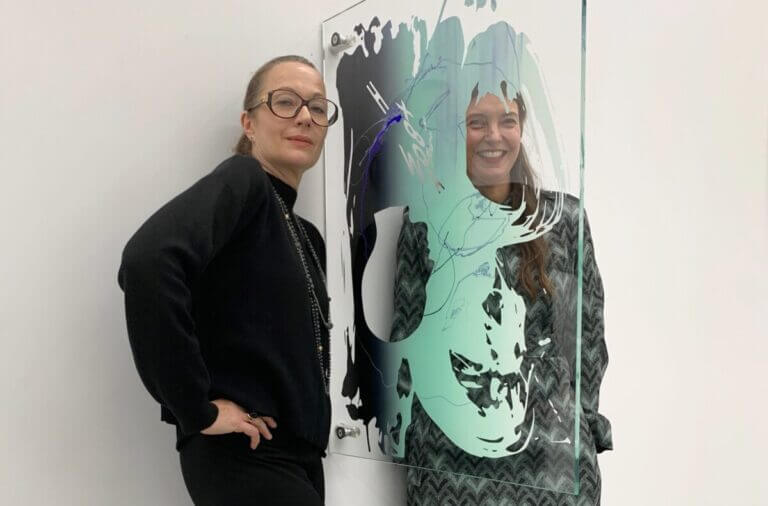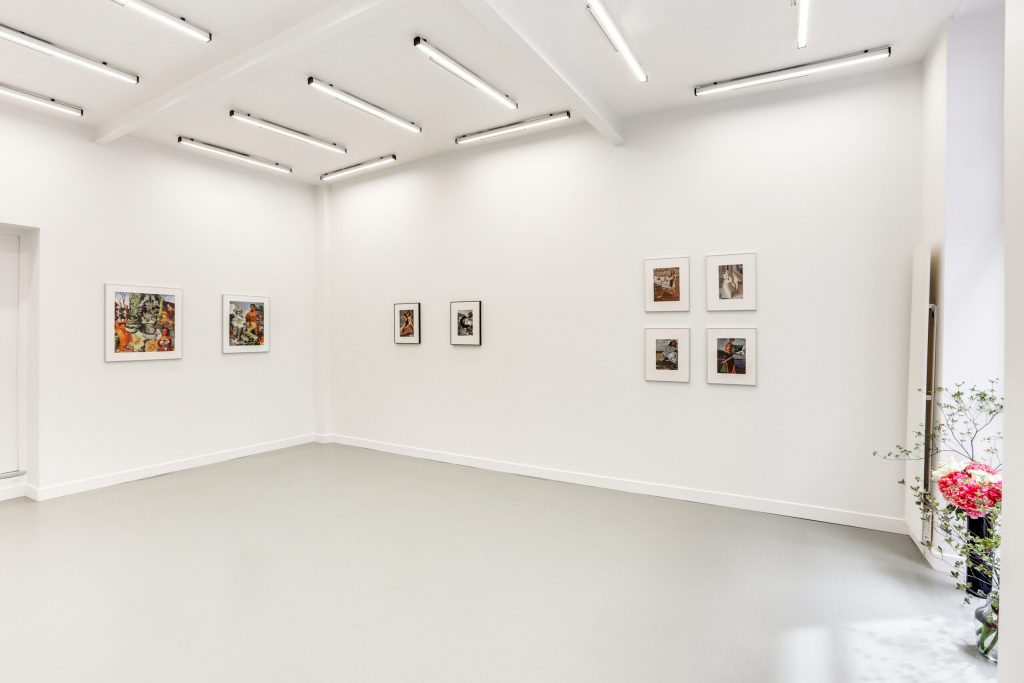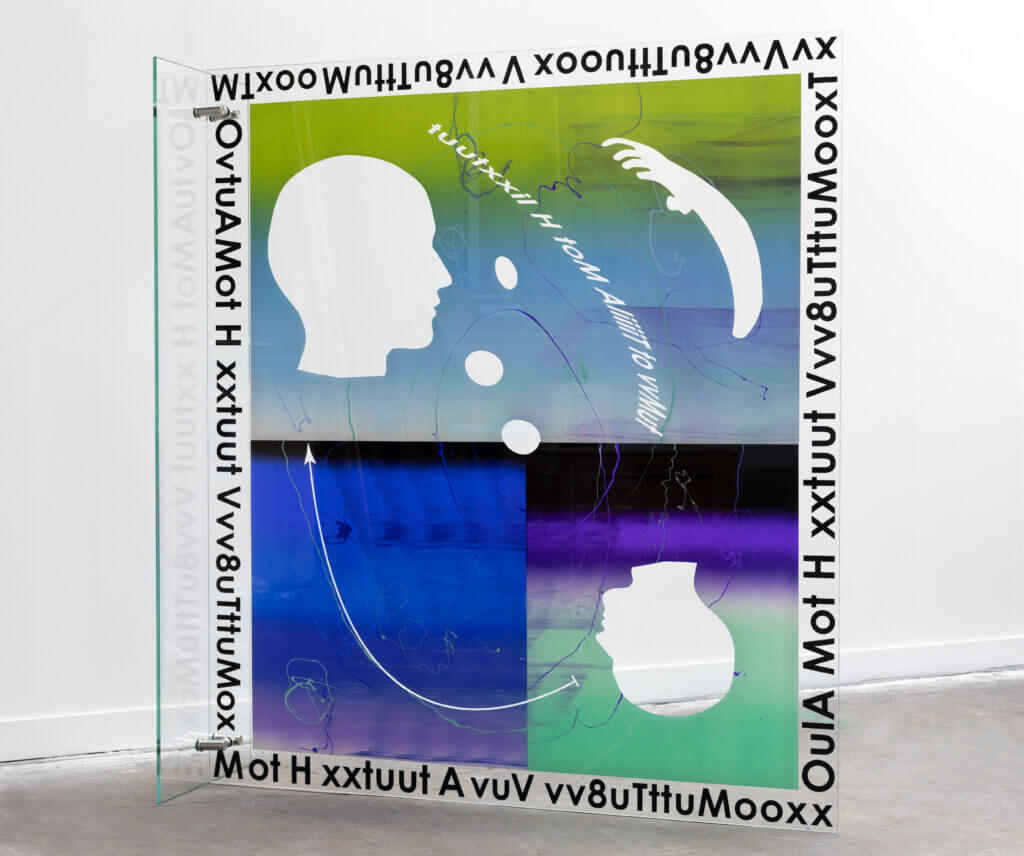A Q&A With Ciléne Andréhn of Andréhn-Schiptjenko

Since its inception in 1991, Ciléne Andréhn and Marina Schiptjenko’s eponymous gallery in Stockholm has worked with a cabal of international artists working in painting, sculpture, photography and video, as well as installation-based and site-specific work. They’ve organised and curated exhibitions that have become seminal in the Nordic context, successfully launching the careers of Scandinavian artists such as Cajsa von Zeipel, Gunnel Wåhlstrand, Annika von Hausswolff and Matts Leiderstam, and giving artists such as Uta Barth, José León Cerrillo, Martín Soto Climent, Ridley Howard, Tony Matelli, Nandipha Mntambo and Xavier Veilhan their first European or Scandinavian one-person exhibition.
Andréhn-Schiptjenko has, for more than two decades, participated in international art fairs such as Art Basel, Independent New York and Brussels, and FIAC Paris. Andréhn and Schiptjenko are both active in the art world beyond the gallery, as selection committee-members of art fairs and board members of institutions and the Swedish National Gallery Association.
During the COVID-19 lockdown, FRONTRUNNER spoke with Andréhn to learn more about the gallery’s origins, the landscape of Sweden’s earlier days in the contemporary art world, and a time when going to art fairs was easy, nay, pleasurable.
So let’s start. How did how did you and Marina meet?
Oh, that’s a it’s a bit of a long story, but I’ll try to shorten it. We were both living in Stockholm at the time. I was running a gallery that I did not own, but I was directing it. And it was kind of my first job in the art world that I myself initiated, and I knew nothing about running it. My boyfriend at the time did a show at this kind of underground gallery that was run by a group of people, including Marina’s boyfriend. So, her boyfriend actually bought a piece from my boyfriend and [this was the] first gift that he gave to her. They would come to the gallery sometimes. At a certain point I really needed somebody to come work at the gallery I was working at because I was doing it with somebody who was more or less always abroad. I was discussing this with a mutual friend of ours, and he said, “Oh, you should really call Marina.” I said, “What? Isn’t she boring?” He said, “You know, she’s not, actually.”
Well, I called her and she was quite standoffish on the phone, probably because she was at work at this other gallery. Then she came over and we just hit it off, instantly. Actually when she came to work for the gallery, I was away with some kind of stress-related pneumonia, for four weeks and she ended up on her own. After working together for a couple of months we were both fired by the owners because they just claimed that we were “too professional”. It was all a bit weird and we were quite young. So we were like, “Okay, what do we do now?” So we started Andréhn-Schiptjenko. This was in 1991 and it’s by design that it’s not called “Gallery Andréhn-Schiptjenko”, as we were thinking we might want to do projects, edit multiples or maybe do curating for other people or institutions. We were sensing that the field of curating was going to change and that there would be a place for freelancers. That has turned out to be the case, though we have not really been involved in that. And so, we just got on our bikes and biked around different neighborhoods and found a really small, very cheap space, which was basically a studio apartment. We borrowed, each, the equivalent of like $2,500 from our moms. We founded a company and that sort of, yeah, that kicked it off.
In January 2021, it’ll be 30 years that we’ve worked together. Obviously we are beyond good friends. It’s like a marriage, and we know each other beyond very well. I think that one of the keys to the success of this or the longevity of this relationship is that we were not two friends that started this together. We really met while working and connected through art and while working in a gallery. That was the foundation of our relationship, it was first professional and then evolved into something else.

Do you think that it was through knowing Marina personally that you began to develop the program, or was it process-based?
Marina and I didn’t know each other personally when we started working together so I would say it was work. Stockholm at the time was smaller than it is now. So the art community wasn’t very big. Personally I was in part drawn to the arts through a sense of community. I just started hanging out with artists, I started going to parties at the art academy, and spending time at the museum. I am quite a verbal person and the arts infuse my life with a non-verbal form of imagination and poetry.
Anyway, we had a core group of artists that we were really interested in. Also, there was a financial crisis at that time. There weren’t very many galleries that were showing younger artists, really, at the time. When we started our gallery – I was actually talking to somebody about this, because I think that there can be some parallel to what could happen post-COVID-19 – it was at a time when we could start something that was 50 square meters, with no money, and we would get attention. People would come, we got loads of press. I mean, this is a time when there was press, haha. I think that would not have been possible just a couple of years prior in the late 80s, where you’d have to have much more money and a much grander operation for people to take you seriously. This group of artists that were committed to working with us, they were of our generation, more or less – that was kind of our capital. This is important, this is where we come from – the art and the artists are the bedrock of what we do.
Right then you just said something that really intrigued me, just now. You said something about “before the 90s”, about that period just before when you talked about “a grander operation.” What was your understanding of that prior period that seems to not be in the memory of someone who’s younger?
I remember in the late 80s when when I started being really interested in the arts as an adult, there was a lot of focus at the time on auctions in Sweden: tremendous focus on early 20th century, late 19th century Swedish landscape paintings that would go for exorbitant sums of money. It was not uncommon practice that people would pool and buy artwork together, and it would just be in storage. It was a speculation economy but contemporary practice was not at all concerned.
So this was specific to Sweden?
I don’t know, I wasn’t interested in that and was too young. Contemporary practice was somewhere else.
My favorite programmes are Maureen Paley’s program here in London and also Fred Snitzer in Miami. Fred started in the 90s, as well.
And you know, Miami was nothing like now. I went to Miami a few times in the mid-90s to accompany my husband. I’d heard about this guy called Marty Marguiles. This was the time where there were phone books in the hotel rooms so I looked and I found Martin Marguiles. I telephoned and said, “Hello, my name is Cilene, I’m from Stockholm where I have a gallery. Somebody told me you’re a collector.” “Oh, cool. Come for lunch.”
Amazing. He’s amazing, Marty and Connie are amazing.
That would probably not happen today. I also think that now it would be difficult for people like Marina and myself, in our 20’s, not from Stockholm, not from big money, to just turn up and get started.
So that that brings me to another question. Are both you and Marina Swedish?
Yes and no, we are both born in Sweden but our families are not entirely Swedish and Sweden was an insanely homogenous country in the 60s and 70s. So we’ve both grown up with the sensation of being outsiders of sorts. I also spent my early teens in Swaziland and never really readjusted back, after that.

What did you and Marina find to be the biggest and most heartbreaking challenge as you kept growing through this development of the gallery?
The biggest challenge, I think, is that we’ve been held back by a lack of funds, to be honest. Well, maybe that’s not entirely true. I think there’s been multiple challenges. Sweden is a tiny country, but it was urbanized and industrialized very late and very quickly. It’s easy to forget that slightly more than a hundred years ago, a quarter of the population left because they were starving. So, you know, it’s been a fairly short and recent process of creating wealth in Sweden. The whole political project of the 20th century, which was essentially Social Democrat, was about creating this wealth and distributing it evenly, and they were successful at that. But it’s very much a materialistic project. So anything that is connected to culture, especially what one would call “high culture”, like fine art, opera and theater, has never really been a priority. It is seen almost as a luxury. I sense this is a huge difference now that I’m in Paris, the way that people view the profession.
Also, in Sweden, there are few institutions – although there are more now than when we opened – but in short it is a country where culture is not very valued. That that has, for sure, been a challenge and a drawback when it comes to our desires for an international program. We have shown international artists very early on in their career and we have lost some of them because there wasn’t really a market in Sweden and so it didn’t interest them them to go on showing with us. We were too much in the periphery of things.
Now that we’ve reached this sort of unwinding of the international art fair model because of COVID-19, how did you and Marina feel about this sort of rapid pace of participation in the international affairs?
I actually just found a slide of me in 1991 at an art fair in Stockholm! To be honest, for Marina and I, the fairs have been very important. We did Art Chicago in ‘95, ‘96. So of course, at that time there were one or two international art fairs and it was just a small part of the work we did. Then we did Liste in Basel the first time it took place in 1996, in ‘97 again, and then in ’98 we were accepted with a project by Annika von Hausswolff for Statements at Art Basel. We’ve been in Basel ever since. It was obviously very different at the time. Being in Sweden, doing the fairs was one way of coming out of the periphery of things. In the beginning I really loved the fairs. I mean, it was great to travel, it was exciting to meet all these new people, I think it’s hard now to see how very important they were for actually connecting with people and above all see lots of art from all over the world pre-internet!
Do you remember a particular turning point in which you thought, “This is getting too nuts…this is getting too much”?
Now, I can’t really say that I do that. But we have in the past couple of years just wanted to connect with people in a different way. So we felt that opening a small space here in Paris will enable us to not only present real exhibitions but also develop relationships and to make connections that we can’t really have at the fairs because the pace is too quick and that we can’t have in Sweden, because nobody goes to Sweden more than once in a lifetime. Paris is a city where art and culture is valued and not only do people love to come, but they actually do come. It is extremely vibrant, the culture on offer is outstanding and people are very knowledgeable and curious.

Poem (an appositive, an amplification, an illustrative quotation), 2019
Silkscreen ink on low-iron tempered glass
150 x 170 x 0.9 cm
Courtesy of Andréhn-Schiptjenko (Stockholm/Paris)
Our readership, our younger readers, may not have ever known a time of not having art fairs, you know?
When we started doing them, it was very much, “Wow, the pleasure of hanging out with like minded people!” I could, I have to say, I still feel that way. In Basel, for instance, you are surrounded by tens of thousands of people who not only do they actually know what you do, but they think it’s great. So you’ll feel that thrill of being with with people who are as into art that as I am. In Stockholm, you can feel very isolated with the kind of job that we do.
So then do you suppose you have an idea of what the future might look like, not just for you, but sort of for the landscape as a whole?
Well – of course, nobody knows what the future will look like, even in more predictable times, but now even less so. But I have ideas on what I would want it to look like. I am hoping that there will be a return to the more personal and passionate, where connoisseurship has precedence over business and where the art is more important than the money.